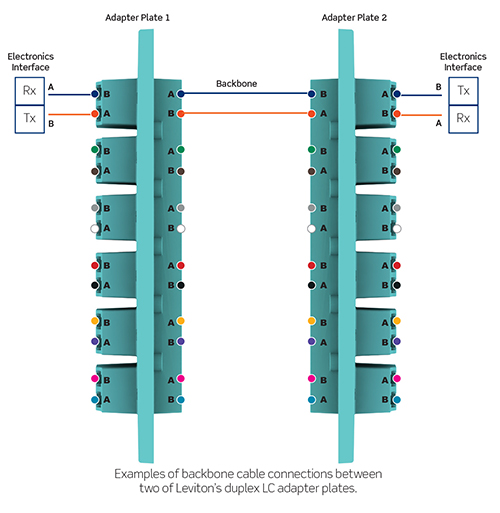Fiber Optic Polarity 101: A-B Polarity

Leviton's Technical Service Reps often receive questions about ensuring proper polarity in fiber optic networks. So we thought we'd take some time to outline the fundamentals of polarity, starting with standard A-B polarity.
Fiber optics relies on a bidirectional transmission where the transmitter port on one end connects to the receiver port on the other end. Since fiber optic links require a two-way - or duplex - connection, there is potential for errors in installation by connecting transmitter to transmitter or receiver to receiver.
To help address polarity issues, TIA published polarity connectivity methods in the mid 2000s to help installers install and select the right components. The TIA-568-C.0 Standard (Commercial Building Telecommunications Cabling Standard) defines the A-B polarity scenario for discrete duplex patch cords, with the premise that transmit (Tx) should always go to receive (Rx) — or "B" should always connect to "A" — no matter how many segments there are, as shown in the diagram below.

A duplex patch cord with A-B polarity carries a "straight-through" position, as seen in the example below. When facing an open port in the "Keyup" position, "B" will always be on the left and "A" will always be on the right.
LC Patch Cord with A-B polarity:

Adapter Plate to Adapter Plate
For backbone and riser multifiber cable, installers should always follow the color code and numbering system below for A-B polarity, as defined in TIA-598-C Optical Fiber Cable Color Coding.
The connection should be between adapter plate rows with the connector key sharing the same orientation. When a connection occurs between adapters in the same keyway orientation, the multifiber colors (blue, orange, green, brown, etc.), will remain the same on each side.
If you're in doubt, just remember: if you use standard A-B patch cords and follow the color codes below, you will always maintain standard A-B polarity, regardless of the number of the number of segments between the transmitters and receivers.




